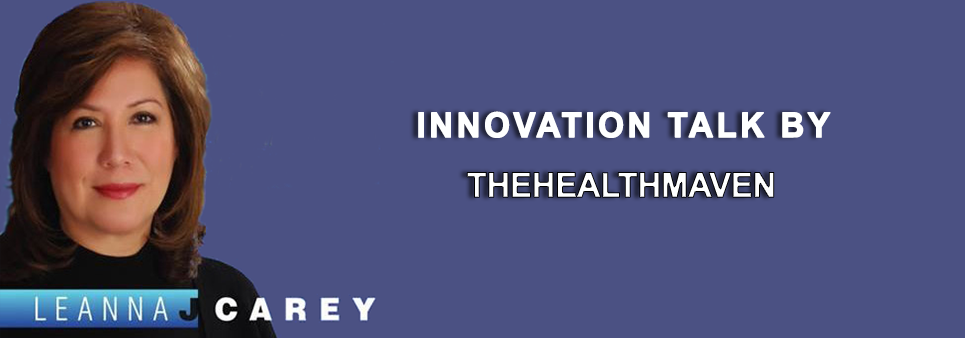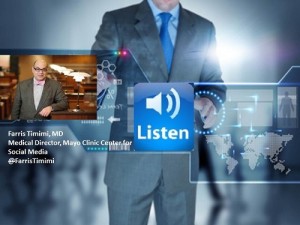When one thinks of healthcare innovation, chances are Mayo Clinic is at the top of the list. Not surprisingly, Mayo does not disappoint when it comes to social media, as well, because Farris Timimi, MD serves as Medical Director for the Mayo Clinic Center for Social Media and led the collaboration for the newly launched book, Bringing the Social Media Revolution to Health Care. Dr. Timimi will share with our listeners the real value of engagement that stretches beyond the bottom line – patients, families, and healthcare professionals. We will also explore the crowdsourcing experience and the valuable perspectives gained while co-creating
Author Archives: admin
Innovate Now Innovate Smarter – Douglas Goldstein
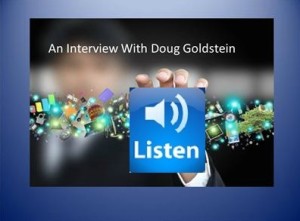
Every conversation with Doug Goldstein will take you on a journey – whether gamification, digital, or mobile he will ignite your innovation juices. Known as @eFuturist, online, he is a trusted influencer and is shaping healthcare conversations online. During my interview with Doug, he will share
why engagement will play a pivitol role in transforming healthcare
why the healthcare industry needs to be smarter about innovation
why mobile social gaming is increasingly the preferred method for people to receive content and information
50 Shades of Social Media – Kevin Pho MD
2013 Social Media Trends – An Interview with Thomas M. Lee
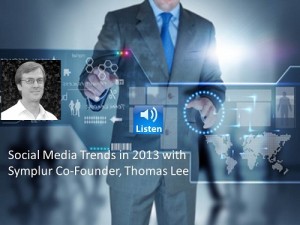
Thomas M. Lee, the co-founder of Symplur, joins LeAnna to discuss social media trends for 2013. During their trendspotting convo, Tom shares concrete examples of how 2013 is going to shape up – but, then again, he should know. Symplur is one of the most innovative social media platforms where healthcare stakeholders convene to track and monitor key influencers. The participation in social media has been a disruptive surprise, and they will explore what’s on the horizon.
The Era Of Physician Entrepreneurs – Jeffrey N Hausfeld MD
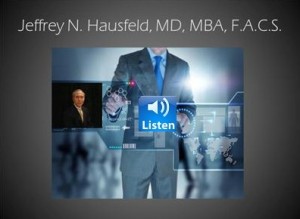
Physicians are innovating and they are making their mark in the healthcare ecosystem. They have a firsthand view of unmet needs and they are creating tools that will fundamentally change the way healthcare is being delivered. How do physicians balance their existing practices and still take the risk to innovate? Dr. Jeffrey N. Hausfeld will share the importance of participating in supportive networks, insights on why physician entrepreneurs are key to healthcare innovation, and the challenges they face.
Innovation Drivers – Matthew Holt and Indu Subaiya
Do you know how to read the signals of change? In my recent interview with Dr. Indu Sabaiya, she could have said that the most significant
driving force in healthcare innovation today is a result of consumers becoming
more interested in their own health, the explosion of sensors and devices, or
even technological possibilities – but, she did not. Instead, she went to the
to the core of the matter and said that the single most important driving force is that the current healthcare system is not sustainable and that, “healthcare for the most part is still a source of frustration and heavy financial burden for the average person, and that force is causing healthcare stakeholders to innovate, change and improve.” That’s a true innovator talking – opting out of the buzz. I had the great privilege of interviewing the highly respected innovators and founders of Health2.0 this week,Matthew Holt and Dr. Sabaiya, who have taken their business from an idea to the global arena. If you are wondering if this is your time to innovate, take a few minutes to listen to their deep experience on how to listen for signals of change.
While there are some CEO’s who have been successful at reinventing and innovating, like Aetna’s Mark Bertolini, Holt admits that it is not easy to spot the signals of change. This is true especially for larger companies because once they identify a market tipping point, making the jump from a declining business model to one that is on the incline is difficult. He pointed to the importance of looking for signal events like companies coming to the market with different offerings, legislative mandates like ACO’s, companies buying products in different ways. Holt added that the most difficult element of growth is discerning if the market is moving beyond those early adopters into a real tipping point, then ask, “How is it different this time?” For the full interview click here!
Purpose Driven Innovator: Alan Blaustein
Ralph Waldo Emerson said that, “the purpose of life is not to be happy. It is to be useful, to be honorable, to be compassionate, to have it make some difference that you have lived and lived well.”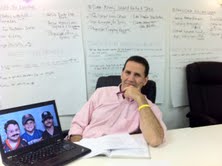 I have a friend whom Emerson would be pleased with and his name is Alan Blaustein; he has a big presence, when he walks into a room people notice, they listen, and before long they want to start a company. Why? He has an innovation story. He also has a patient story. In 2005 he was diagnosed with thymic cancer and experienced first-hand the inefficiencies of the healthcare system to a degree that compelled him to launch CarePlanners with his business partner, Dr. Nancy Snyderman.
I have a friend whom Emerson would be pleased with and his name is Alan Blaustein; he has a big presence, when he walks into a room people notice, they listen, and before long they want to start a company. Why? He has an innovation story. He also has a patient story. In 2005 he was diagnosed with thymic cancer and experienced first-hand the inefficiencies of the healthcare system to a degree that compelled him to launch CarePlanners with his business partner, Dr. Nancy Snyderman.
- They challenge orthodoxies. The founders understand the unmet needs of healthcare consumers and question the rules of the industry.
- Purposeful innovation is their driver. They are determined to make innovation happen by openly seeking others opinions and knowledge, sharing their vision, and leveraging a sense of urgency.
- They have created a unique and focused culture. Check out their manifesto – they have implemented a No BS culture – cool, right?
- Experience. Alan is a hurdler, but that’s an easy one to figure out. They have a combination of deep medical, entrepreneurial, and legal expertise.
Innovation to the Core: A Blueprint for Transforming the Way Your Company
Innovates. Perseus Books Group.
Competitive Innovator – Jason Gorevic
Sometimes we get it wrong. Einstein did not invent the theory of relativity; it was Galileo. We do not have five senses; we have nine. And the business competitive spirit is not lost; it’s trying to reignite. Business leaders know they need to rethink competition – in the March issue of Harvard Business Review, Editor-in-chief, Adi Ignatius, and Dean of Harvard Business School, Nitin Nohria, posed a difficult question, “has the United States lost its competitive edge?” While I’m not convinced that we have lost our competitive edge, I will submit that it does originate with competitive leaders and that is where we are in short supply.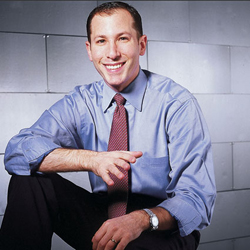 Think about the 2012 Right Management survey, where the top concern of companies is the lack of high-potential leaders within an organization. In light of the market changes, how do emerging leaders instill the qualities of competitive advantage throughout a company?
Think about the 2012 Right Management survey, where the top concern of companies is the lack of high-potential leaders within an organization. In light of the market changes, how do emerging leaders instill the qualities of competitive advantage throughout a company?
For those holding on to traces of skepticism let me share that competitive leaders in healthcare do exist and they are driving their own trajectory with vision, innovation and competitive advantage. Innovation performance expert Drew Marshall and I had the privilege of interviewing the respected CEO of Teladoc, Jason Gorevic, who embraces the new reality of retaining top talent and thrives on the business imperative of innovating for current customers. Gorevic is a refreshingly present CEO, who understands why Teladoc is in business and confidently manages the competitive edge of his company…for the full blog post take a gander at Innovation Excellence!
Innovation from the Inside: Bruce Cryer
Sensazione is the continual refinement of the senses, sight, sound, smell, taste and touch, especially sight, as the means to enliven experience. After another mind clearing Sunday of wandering the National Gallery I picked up Michael J. Gelb’s, book How to Think Like Leonardo da Vinci, and had to smile when I discovered that Gelb is a creativity and innovation expert whose writing inspires both the innovator and everyday individuals looking to disrupt their own thinking. Ironically, it was Gelb that helped me to connect the dots on the success and growth of HeartMath LLC, a company which understood its creative potential from the very beginning.
 After my interview with innovator Bruce Cryer, a founding member and Global Director of HeartMath, I am certain that the concept of sensazione and understanding how to leverage time were two key ingredients to their success. Cryer explains that they started with a simple concept “when your heart is involved in what you do, things go better.” I’ll borrow a quote from author, Catherine Hrudicka who says that creativity is the, “synthesis of ideas and that we must have a vision or an intuition of a place to go, new products, innovations and business models.” What steps did HeartMath take to make it to the global market from having a great idea? Designing a product around a new understanding of how the heart and brain talk to each other is not so simple.
After my interview with innovator Bruce Cryer, a founding member and Global Director of HeartMath, I am certain that the concept of sensazione and understanding how to leverage time were two key ingredients to their success. Cryer explains that they started with a simple concept “when your heart is involved in what you do, things go better.” I’ll borrow a quote from author, Catherine Hrudicka who says that creativity is the, “synthesis of ideas and that we must have a vision or an intuition of a place to go, new products, innovations and business models.” What steps did HeartMath take to make it to the global market from having a great idea? Designing a product around a new understanding of how the heart and brain talk to each other is not so simple.
A Creative Team
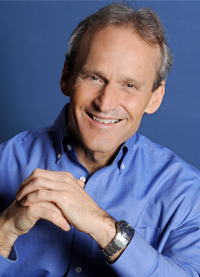 Cryer describes that in 1991, Doc Childre intentionally put together a founding team with backgrounds from science, business, education, art and music to design a product that would help consumers learn to transform stress. One question that was always raised during development meetings was, “how will the customer respond to this idea?” HeartMath’s objective was to make the technology enjoyable for consumers as they learned about controlling stress. Cryer recognized early on that Steve Jobs always intrigued and inspired consumers and HeartMath did not keep the Jobs philosophy in the abstract. Had they a looking glass, they would have seen that their product would eventually be featured in a number of scientific peer-reviewed journals, the NBC Today Show, ABC World News Tonight, CBS’ The Early Show, CNN’s Headline News, Discover.com, and win the People’s Choice Competition for the Last Gadget Standing Award at CES 2009. For the full length of my interview, please go to Innovation Excellence!
Cryer describes that in 1991, Doc Childre intentionally put together a founding team with backgrounds from science, business, education, art and music to design a product that would help consumers learn to transform stress. One question that was always raised during development meetings was, “how will the customer respond to this idea?” HeartMath’s objective was to make the technology enjoyable for consumers as they learned about controlling stress. Cryer recognized early on that Steve Jobs always intrigued and inspired consumers and HeartMath did not keep the Jobs philosophy in the abstract. Had they a looking glass, they would have seen that their product would eventually be featured in a number of scientific peer-reviewed journals, the NBC Today Show, ABC World News Tonight, CBS’ The Early Show, CNN’s Headline News, Discover.com, and win the People’s Choice Competition for the Last Gadget Standing Award at CES 2009. For the full length of my interview, please go to Innovation Excellence!
Beyond Strategy: Jack Corrao
Brian Solis has it right, it is the end of business as usual, and healthcare is no exception. Has the market reality produced a new set of assumptions, emerging opportunities, or a better climate for disruptive innovation? In my interview with Jack Corrao, the managing director of the Corrao Group, he stated that the healthcare landscape is being challenged by innovations such as cloud computing, microsensor devices, and most of all, healthcare consumerism. Just as Solis wrote his book to “groom a new generation of leaders, people who want to lead and are looking for the answers and inspiration necessary to guide others into uncharted territory,” Corrao observed that there is a new generation of innovators and entrepreneurs who want and need to learn quickly how to diminish any probability of failure.
he stated that the healthcare landscape is being challenged by innovations such as cloud computing, microsensor devices, and most of all, healthcare consumerism. Just as Solis wrote his book to “groom a new generation of leaders, people who want to lead and are looking for the answers and inspiration necessary to guide others into uncharted territory,” Corrao observed that there is a new generation of innovators and entrepreneurs who want and need to learn quickly how to diminish any probability of failure.
Corrao’s perspective is also in sync with the recent PricewaterhouseCoopers 15th Annual Global CEO Survey which indicated that CEO’s are “slightly less optimistic than they were last year, but are still focused on growth. Further, customer demand is the primary driver of corporate strategy which includes getting the product and service portfolio right…and encouraging the free flow of ideas and innovation regardless of where they originate.” The report also notes that “almost all US CEO’s are revising their innovation strategies with 72% focusing on creating new products and services within existing business models.” As an example, many in healthcare have recently focused on Aetna, as a company that is just not talking about innovation, but leading change by leveraging innovation as a vehicle for growth. Check out what Aetna and Chairman and CEO, Mark T. Bertolini, @mtbert is tweeting: “…DC is not the answer, just the catalyst. Disruptive technology in the hands of the doc and consumer will disrupt healthcare!” Corrao agrees that, “Aetna serves as a perfect example that ‘seeing what is next’ does not only come from startup’s – Aetna is responding to the new demands of the market place, and hopefully we will see more companies doing the same; it’s important to realize that the market is much more peer-to-peer connected due to social media and technology platforms.”
 Another company that seems to have responded to the connected customer and consumer is Salesforce.com, the enterprise cloud computing company, which has built an ecosystem that allows companies to bring their ideas to market. Corrao states that, “they recognize that companies need innovation to succeed and have responded to the impact of social media; companies are changing the way they collaborate and communicate with customers and Salesforce.com provides the ability for businesses to transform themselves into a social enterprise – a tremendous tool for healthcare innovators.” The full length of my interview can be found at Innovation Excellence!
Another company that seems to have responded to the connected customer and consumer is Salesforce.com, the enterprise cloud computing company, which has built an ecosystem that allows companies to bring their ideas to market. Corrao states that, “they recognize that companies need innovation to succeed and have responded to the impact of social media; companies are changing the way they collaborate and communicate with customers and Salesforce.com provides the ability for businesses to transform themselves into a social enterprise – a tremendous tool for healthcare innovators.” The full length of my interview can be found at Innovation Excellence!




